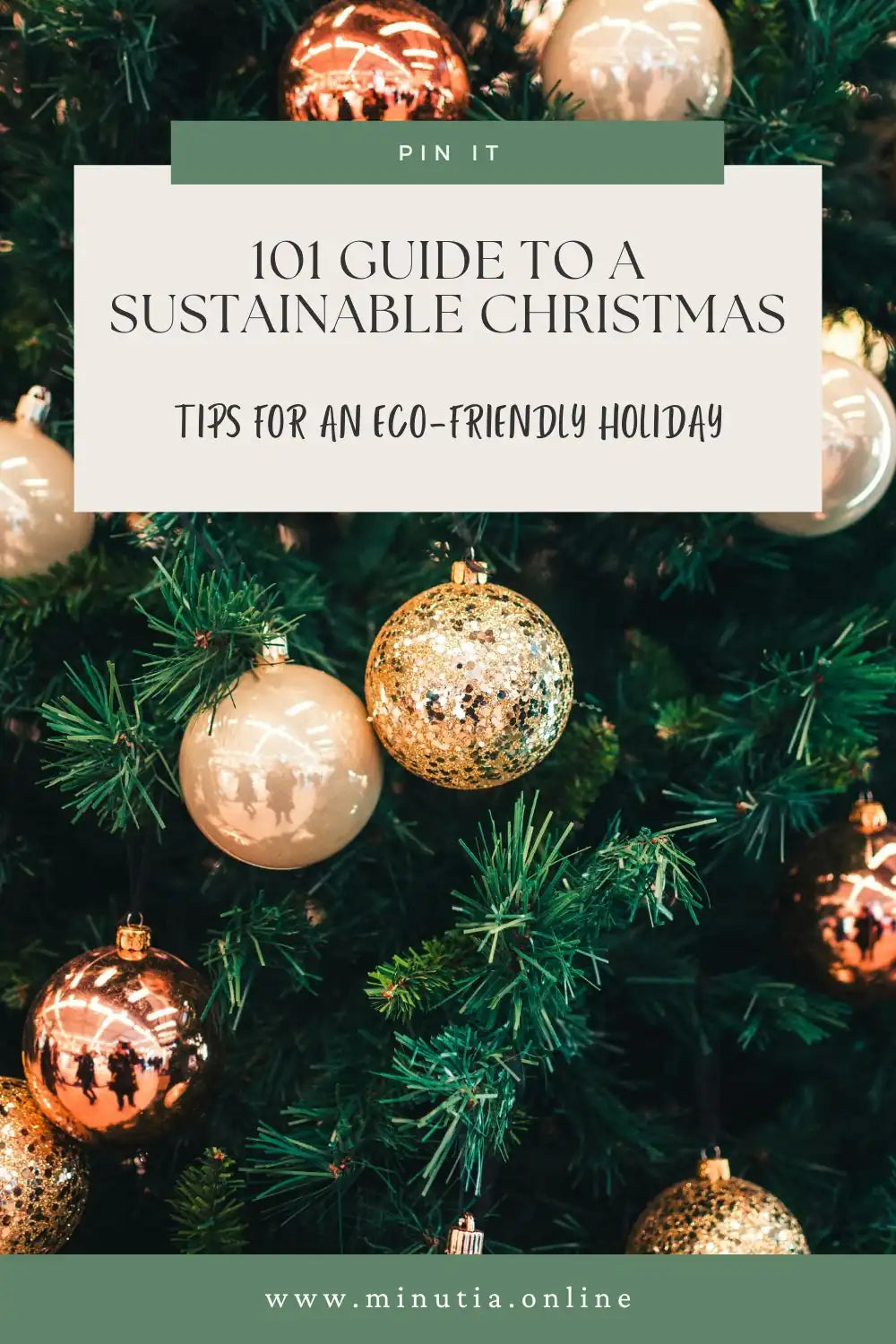101 Guide to a Sustainable Christmas: Tips for an Eco-Friendly Holiday
Christmas, with all its cheer and merriment, can also be a time of excess and waste. However, it doesn't have to be that way! Being eco-friendly during the holidays is all about creativity and making mindful choices.
Reality of Christmas Waste in the United States: A Statistical Overview
The holiday season in the United States is synonymous with an alarming spike in waste generation. Statistics reveal that Americans produce an additional 25 million tons of garbage during the Christmas period. Among this, around 2 million tons are just wrapping paper and shopping bags, highlighting the excesses of gift-giving traditions.
Furthermore, the environmental impact of discarded Christmas trees is significant, with nearly 15 million trees thrown away each year. Food waste is another major concern, with approximately 30% of all food prepared during the holidays ending up as waste. These figures underscore the critical need for adopting more sustainable practices during the festive season to mitigate the environmental burden.
How to Do a Zero-Waste Christmas?
Imagine a Christmas where you leave behind very little waste – sounds challenging, but in reality, it only means some extra planning and creativity! Hear me out.
Eco-Friendly Christmas Gift Wrapping
Using recyclable paper with a "Kindly Recycle" note, or reusing the wrapping paper you received is a good start for eco-friendly wrapping, but let's think even greener.
How about finding old wooden boxes at your local thrift store and adding a personal decorative touch? These boxes are perfect for immediate family gifts and can be reused many times.
You could consider using baskets, which are not only practical for gift-giving but can be repurposed later.
Wrapping presents in reusable tote bags also cuts down on waste.
This approach is not only kinder to the environment but also gives your gifts a more purposeful value.

What is an Eco-Friendly Alternative to a Christmas Tree?
Shortly: It depends. If you already own a Christmas Tree, that is probably the most sustainable option for you. But, if you're considering getting an alternative to a traditional Christmas tree, how about a potted plant? You could opt for a living tree to keep in your home all year or a native plant that adds a local touch.
Based on a 1989 NASA study, certain indoor plants aren't just pleasing to the eye; they're also air-purifying champions. They absorb carbon dioxide, release oxygen, and are super effective at removing other pollutants. So, not only do these plants make your space look great and festive during Christmas, but they also keep your air clean and fresh all year round. The following plants are commonly cited for their air-purifying properties based on NASA's research and subsequent studies by other researchers.
-
Spider Plant (Chlorophytum comosum): Known for its ability to remove formaldehyde, carbon monoxide, and other toxins from indoor air.
-
Peace Lily (Spathiphyllum spp.): Effective at removing common indoor pollutants such as formaldehyde, benzene, and trichloroethylene.
-
Snake Plant (Sansevieria trifasciata): Also known as Mother-in-Law's Tongue, this plant is excellent at filtering out toxins like formaldehyde, benzene, xylene, and trichloroethylene.
-
Boston Fern (Nephrolepis exaltata): A popular choice for improving indoor air quality, as it can help remove formaldehyde and xylene.
-
English Ivy (Hedera helix): This climbing vine is known to filter out airborne toxins like benzene, formaldehyde, and xylene.
Another beautiful and effective way to celebrate the holidays in a more sustainable way is choosing a real Christmas Tree that you can compost later. Keep in mind that if you don’t have a compost bin and throw out the organic waste into your regular trash, it will eventually end up in landfills and generate Methane. Methane emissions contribute to global warming, and making efforts to reduce them is an important aspect of mitigating a climate change.
Eco-Friendly Christmas Indoor Decorations
Eco-friendly decorations are all about creativity and sustainability. You can use natural materials like pinecones, branches, and dried fruits for a rustic, charming look. Consider searching for "DIY eco-friendly Christmas decoration" or "Zero waste Christmas decoration" on Pinterest to kickstart your crafting. Keep in mind that the most sustainable option would probably be to repurpose what you already have or reuse your old decorations.
By taking this approach, not only do you reduce waste, but you also spread awareness about the significance of celebrating holidays in an environmentally conscious way.
Sustainable Christmas Gifts Ideas
When selecting gifts, prioritize sustainability. Think about purchasing items from small, eco-friendly, local businesses, including those owned by women or minorities. Here are some practical ideas to consider:
- Think of gifting experiences such as concert tickets or cooking classes,
- or choose a gift that will be cherished for years to come.
- Practical gifts that are essential in everyday life can make excellent presents. It's never a bad idea to ask what a person needs before making a purchase.
- Another thoughtful gesture is to ask friends or family to donate to a charity in your name, offering a gift that extends kindness to others. There are organizations focusing on different areas like research, healthcare, environmental activism, or hunger relief where they can make donations.

Planning an Eco-Friendly Christmas Dinner
- Consider adopting a 'less is more' philosophy. Instead of a big bird, think about buying a smaller one. Plan your meals carefully to ensure you're not overbuying or overcooking.
- Freezing or properly storing the leftovers is a great way to minimize waste.
- Shopping locally is another way to contribute to sustainability by reducing your carbon footprint. Seek out farmers' markets or local growers for your meat and veggies.
- Look for certifications such as "Certified Humane", "Animal Welfare Approved," or "Pasture-Raised" on the packaging. These certifications indicate that the animals were raised in accordance with certain standards of animal welfare.
- Pay attention to labels that indicate grass-fed or pasture-raised meat. While these labels are not regulated as strictly as certifications, they can still provide some assurance that the animals were raised on pasture and fed a natural diet.
- When purchasing meat from a farm or butcher, don't hesitate to ask questions about the meat's origin and how the animals were raised. A knowledgeable butcher should be able to provide information about sourcing and farming practices.
Eco-Friendly Outdoor Christmas Decorations and Christmas Lights
Decorating the outside of your house for Christmas can be both beautiful and environmentally friendly.
If you're using regular electric lights, when the replacement time comes, go for LED options. They consume much less energy and last longer than traditional bulbs. To save more energy, put them on a timer. This way, you're not only making your home festive but also doing your part to reduce energy consumption during the holiday season.
If you want to go a step greener, consider switching to solar-powered lights, which harness energy from the sun and are great for saving electricity. These lights paired with LED bulbs, make a perfect energy and waste efficient match.
For an even greener approach, adorn your outdoor space with natural decorations, like wreaths made from evergreens. These can be composted or reused later, adding to your eco-friendly efforts.
Remember, a sustainable Christmas isn't just good for the planet; it can also make the holiday more meaningful and special. By choosing eco-friendly options, you're not only celebrating the season but also showing care for the planet we call Home. Let's make this Christmas a green one together!
Looking for a Recipe? Search here!

Mindful Minutia provides practical tips on managing everyday activities in a more sustainable way.
Authored by Tamara Schweitzer for her daughter Emily, all children, and their sustainable tomorrow.
Discover more about our author through a candid interview.


Leave a comment
This site is protected by reCAPTCHA and the Google Privacy Policy and Terms of Service apply.